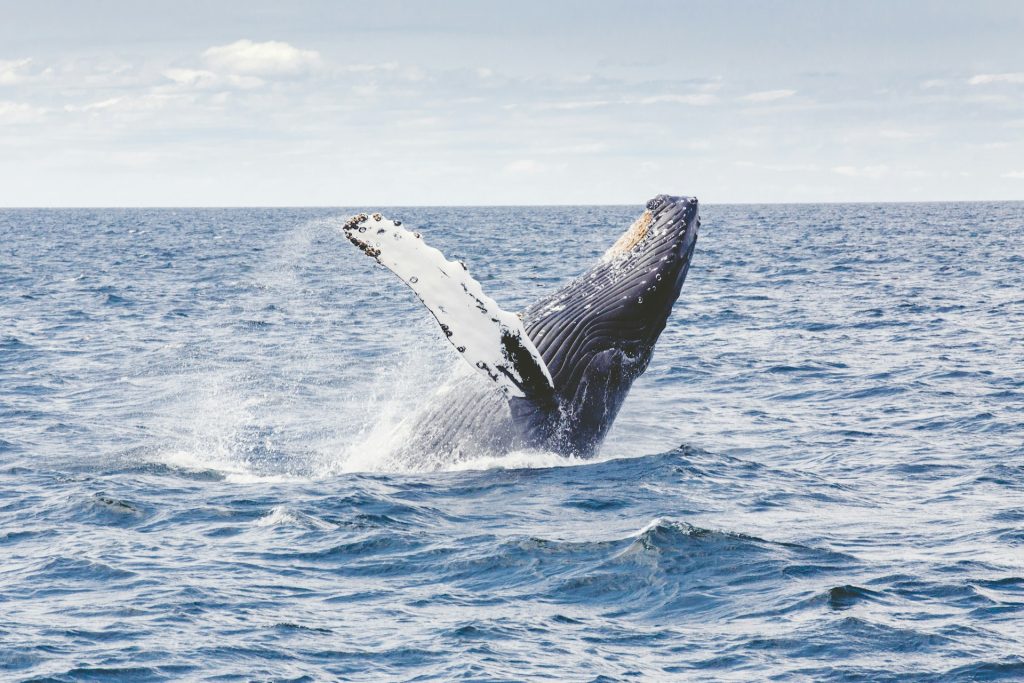In my previous post, I shared how scientists have been working on decoding whale languages. They also discovered that sperm whales, the largest-toothed whales, talk a lot.
You can check out if you missed that post here on KidzNet.
Now, here’s another exciting update. Did you know scientists believe they finally established communication with a humpback whale for 20 minutes?
Amazing, right?
Scientists have “communicated” with a humpback whale named Twain that can be found off the coast of Alaska. This whale was first seen in Hawaii in the 1980s.

Humpback whales, or Megaptera novaeangliae, are well-known species of baleen whales. They can grow up to 60 feet long and weigh around 40 tons (40000 kg).
These whales typically migrate yearly, traveling up to 16,000 km (9,900 mi) to tropical or subtropical waters. This migration is crucial for their survival, connecting them to food sources and safe breeding places.

For nearly 40 years, the SETI Institute has searched for signs of life beyond Earth, but they haven’t found any clear evidence of aliens yet. So, these scientists turned to studying whale languages instead, believing it’s another type of intelligence in our oceans.
Conversations with Twain
Dr. Brenda McCowan from the University of California Davis and her team at the SETI Institute have been studying how humpback whales talk to each other for years. The team is called Whale-SETI.
Whale-SETI stands for Whale Search for Extraterrestrial Intelligence, a project that studies marine animals in search of alien life.
Now, you might ask why. They want to understand whale communication systems because they believe this could help them look for life beyond our planet, as it might carry complex messages similar to human languages or even potential messages from aliens.

How do they study whale languages?
They capture and analyze these sounds using advanced underwater microphones and artificial intelligence. The AI looks for patterns that might suggest a language.
Now, you might ask, “How did the scientists communicate with Twain?
The research team was exploring Frederick Sound in Southeast Alaska when they decided to play a recorded “whup-throp” call of a humpback whale using an underwater speaker. They were surprised when Twain, the humpback whale, swam within 100 meters of their boat and began to respond to the sounds.

“After playing the contact call three times, we got this huge response. Then, to keep the animal engaged, I started trying to match the latency of her calls to our calls. So, if she waited 10 seconds, I waited 10 seconds. We ended up matching each other. We did this 36 times over a 20-minute period,” said Dr. McCowan.
“We believe this is the first such communicative exchange between humans and humpback whales in the humpback ‘language,’” she added.
During the 20-minute interaction, Twain spun around the boat and matched the timing of each call the team played.
Connection Between Whales and Extraterrestrial Intelligence
Researchers believe that humpback whales’ behavior supports an important idea that there may be life beyond Earth, especially aliens.
Dr. Laurance Doyle from the SETI Institute said that because of our current technology’s limits, any extraterrestrial beings would want to reach out to humans, which could be how humpback whales would communicate.

The team believes that studying whales can help them learn to recognize and understand intelligent signals from the ocean or outer space.
The researchers also plan to use math and various forms of artificial intelligence, like information theory and machine learning, to analyze the complexity of whale communication. They aim to grasp the patterns and rules in the messages they receive.








